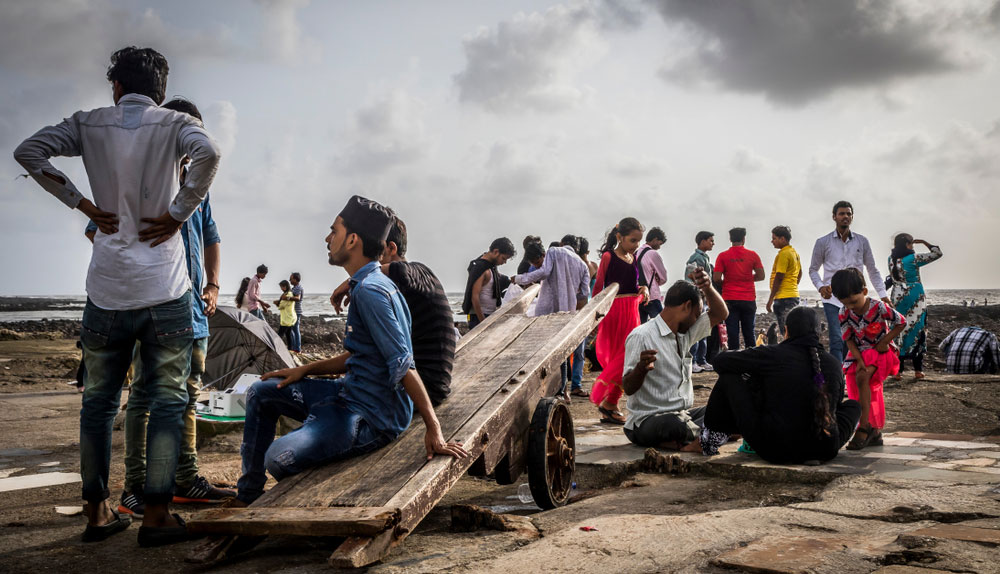A few years ago, in this sweltering corner of western India, the horizon was dotted with hunched, barefoot women swinging sickles all day to cut wheat for the spring harvest.
Now, a giant green harvester clears an entire half-acre field within minutes, allowing farmers to save money and quickly sell the wheat.
Chhaya Kharade, 36, and other women doing lighter farm work were gradually replaced by the machines that now crisscross wheat, sugarcane and onion fields surrounding Chincholi, a village 190km east of Mumbai.
“I should be busy now, as the wheat harvesting is going on. But there is hardly any work for me. Almost all farmers are using machines,” Kharade said in her two-room house.
Women, especially those working in precarious informal sectors, are at the sharp end of what economists and Opposition politicians describe as a job crisis in India.
According to the private Centre for Monitoring Indian Economy (CMIE), 90 per cent of around 10 million jobs lost last year were held by women.
Several unemployed women interviewed by Reuters said they had soured on Prime Minister Narendra Modi, who had swept to power in 2014 vowing to turn India into an economic powerhouse but has struggled to create jobs.
Insufficient employment — despite India’s roughly 7 per cent economic growth rate — is a major voter worry.
“Modi’s government has not done anything to create employment in this region. We would like to vote for a party that will set up factories and create jobs,” said Mumtaj Mulani, a 40-year-old woman who was plucking weeds from a pearl millet field in the area. She said she usually struggled to find work because of the spread of machines.
The dwindling female labour participation rate could have far-reaching implications for the country’s economic development and the progress of women’s rights.
“When nearly 50 per cent of the labour force is unable to live up to its potential, India is foregoing significant growth, investment and productivity gains,” said Milan Vaishnav, director of the South Asia programme at the Carnegie Endowment.
“The social costs, while less tangible, are nevertheless acute,” Vaishnav added, noting that research suggests women’s economic empowerment reduces inequality and ensures women have a greater voice in society.
Measuring the problem is tricky, and Modi’s government has delayed the release of controversial jobs data.
To be sure, the loss of jobs to machines is a global issue, but Indian women have a more limited range of alternative work than their male counterparts.
When compared to nations with similar income levels, India’s female labour participation rate is “a distinct outlier”, according to Vaishnav.
Economists say Modi’s two signature economic policies — demonetisation and the implementation of the goods and services tax — have hurt women more than men because they are more likely to be employed in vulnerable, informal workplaces.
Demonetisation thrust the informal, cash-based economy into turmoil. A year later, many small businesses went under, unable to deal with the GST’s complexities or rate increases.
“If there are fewer jobs available, who will move out? The women will move out, because they get lower wages. The men will go compete for the few jobs,” said CMIE CEO Mahesh Vyas.
In Dharavi, the Mumbai slum, 33-year-old Farzana Begum has struggled to provide for her five children since the workshop she stitched buttons for shut shop in the wake of the implementation of the GST.
“I have stopped all extra spending on clothes and good food,” said Farzana. “If you ask anyone in Dharavi, everyone has seen a fall in income, lost their jobs or witnessed factories close after GST.”
Her dismay was echoed on the other side of the country, in a village near Calcutta, where Nuren Nesa’s earnings from embroidering saris fell from Rs 700 a week to Rs 300 after demonetisation. Following the GST, work ground to a halt and her embroidery machine is gathering dust.
“Modi’s note ban and GST measures have destroyed our source of income,” said Nesa, 41, who withdrew her son from university because tuition fees grew out of reach.
Some business owners say they receive few applications from women.
“We do not find too many women in the segment we service,” said Vineet Pandey, who owns housekeeping firms in Mumbai.
One businessman who employs roughly 1,000 men at his chemical factory in southern India says hiring women would mean providing separate bathrooms and transport at night.
“If we give jobs to women and not men, there will be complaints from men,” said the businessman. “It is to maintain harmony.”
In any case, it is a moot point for now. His plant, struggling with high costs of power and transport, is not hiring.













